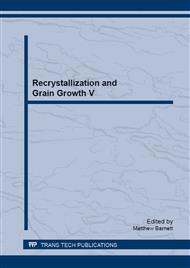p.307
p.311
p.317
p.321
p.325
p.329
p.333
p.337
p.341
Grain Coarsening Characteristics of Modern Nb Microalloyed Steels
Abstract:
Modern steelmaking technologies utilizing microalloyed steel designs have been responsible for enormous economic benefits for both the steelmaker and fabricator. What has not been acknowledged is the environmental benefit that high strength steels have produced in terms of reduced steel usage in major infrastructure projects. The judicial use of microalloying has the potential to further reduce total tonnage requirements while delivering enhanced operational performance and service life. Various projects around the world have begun to recognize these recent microalloying developments. This paper will present the grain coarsening behavior of the new generation of Nb bearing steels, which have been used in major international steel fabrication projects.
Info:
Periodical:
Pages:
325-328
Citation:
Online since:
March 2013
Authors:
Keywords:
Price:
Сopyright:
© 2013 Trans Tech Publications Ltd. All Rights Reserved
Share:
Citation:


